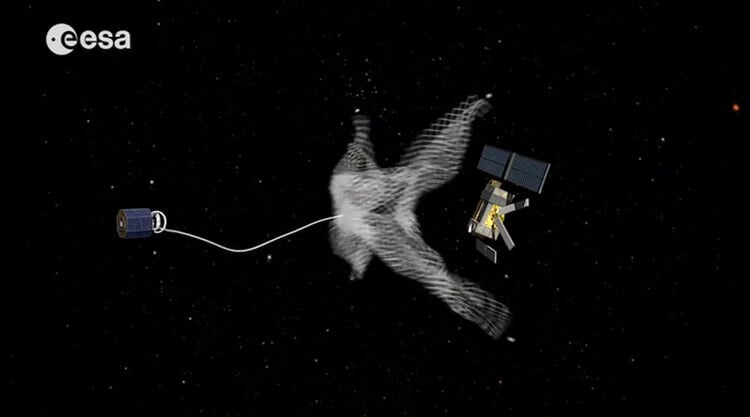
The company SpaceX has just carried out the first successful launch of its heavy rocket, the Falcon Heavy. As the first “payload” carrier was sent into space donated by Elon Musk’s electric Tesla Roadster, and as the first passenger – the dummy, named Starman, who, along with the machine now flies toward the orbit of Mars.
Definitely a historic event. But not everyone was happy about it. If you leave those who believes that this is the start of the Musk just decided to show off in front of the investors of the company, there are also those who believe that with this launch, Musk joined the already growing landfill of debris circling around the Earth and around the red planet. And now more than ever, requires special attention to this problem.
Currently in orbit there are more than 500,000 pieces of space debris. Very different. Most of it is a part of satellites and rockets, which humanity has launched for more than 60 years. Approximately 20,000 of these debris are visible. It is the objects size from 10 inches and more, according to Stuart gray, lecturer in mechanical and aerospace engineering from the Scottish University of Strathclyde.
“Among the visible objects, more than half are the result of collisions between satellites. About a quarter is a part of the spacecraft (1500 of which are still functional), and the remaining part have the remains of rockets and other debris left over from space launch”, — told the grey portal Futurism.
In reality, the picture of space debris is even more depressing.
“If we talk about the mass of all these objects, it turns out that the orbit of the Earth is now about 8000 metric tons of man-made materials,” added gray.
Recycling program
In orbit has accumulated so much debris that it threatens future space missions. And if to consider space debris from a different angle? In the end, most of it consists of very expensive materials from which made missiles and satellites. Can we consider space debris as a potential resource for recycling and subsequent use?
“Objects made of very specific materials, it is highly expensive to produce, and therefore it would be logical to consider the possibility of their reuse. The question is how we can collect these “resources”?, “commented gray.
The problem is that these objects are not just hanging in orbit, they move at very high speeds, approximately 7 kilometers per second. Of course, this seriously complicates the task of catching them. To build spacecraft capable of catching up with such a high-speed space debris, it would not be inappropriate. The game is, as they say, will be worth the candle.
But this does not mean that we should just forget about the garbage and leave it where it is. There are several projects aimed at clearing our orbit.
“Mechanisms of capture, the development of which is now being built on very simple methods that were used even by our ancestors when catching wild animals. We are talking about the harpoons and networks,” explains gray.
“Of course, you need to verify these mechanisms in orbit, but a few missions already scheduled for the near future. For example, one of such missions is e.Deorbit the European space Agency”.

Scientists and engineers of the program of innovative concepts (NIAC) of the American space Agency NASA suggest something similar: use high-tech spacecraft thinner than a human hair, which will capture and retain debris as the network. Others offer to destroy space junk with lasers. But all these concepts, as noted by gray, there is still is only on paper.
Fortunately, we still have time. Space debris in the higher earth orbit, it will be some time to stay there.
“While objects in low earth orbit, get away with it for several months or years, the objects at higher orbits, for example, the same satellites of the global navigation, located at medium altitude, and satellites in geostationary orbit, will if anything be there hundreds and even thousands of years,” explains gray.
The irony is that we continue and will continue to contribute to the completion of the space of the dump but they think how to get rid of it. Or there is no way to turn space junk into useful resources for future use, you need to find a solution to get rid of the problem. And better sooner rather then later may be too late.
Space debris: is it possible to consider it as a useful resource?
Nikolai Khizhnyak